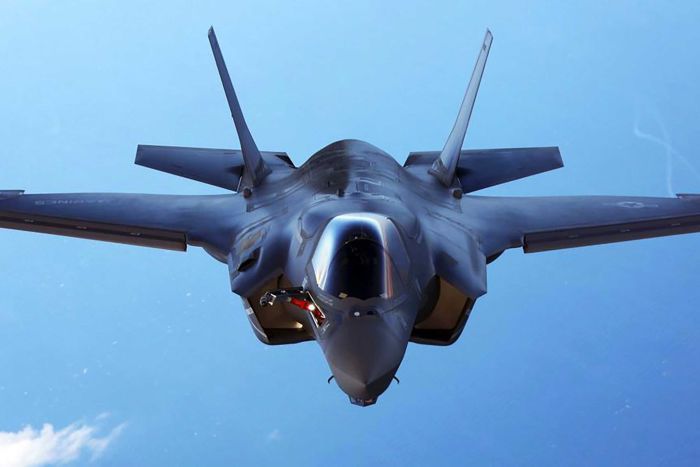Australia grounds JSF fleet after US Marine Corps F-35 in catastrophic engine failure and crash
by ANZDD on 12-Oct-2018

The crash and destruction of one of America's most sophisticated and expensive combat warplanes — an F-35 Joint Strike Fighter — has led to the immediate grounding of Australia's entire fleet of the aircraft.
Key points:
- An American F-35 suffered a catastrophic engine failure and crashed
- The ADF has grounded its fleet until 'safety inspections are complete'
- Israel and the United Kingdom have also paused their flight operations
The Royal Australian Airforce has taken delivery of nine F-35s from US manufacturer Lockheed Martin, and all are now sitting idle at their American training base in Arizona.
Australia is the latest among global partners in the Joint Strike Fighter program to order groundings of their planes as a precaution.
The US Marine Corps led the way with a flight ban on all of its F-35s after one suffered a catastrophic engine failure and crashed in South Carolina in September 28 — the pilot ejected safely, but the remains of the broken fuselage had to be picked out of boggy marshlands near Beaufort.
Since then, Israel and the United Kingdom have also paused their flight operations.
In a statement, the Australian Defence Force confirmed that "the F-35 fleet has been instructed to conduct safety inspections across all delivered engines".
"Australian F-35 aircraft currently based in the US will return to flying operations once safety inspections are complete," the ADF said.
"Some international partners within the F-35 Program are already commencing flying following conclusion of their inspections."
Separately, senior Defence sources told the ABC they expected the grounding would only last "a day or two" and that all nine planes would "soon" be back in the air.
Faulty fuel supply tube may be to blame
Early crash investigation results for the US Marine Corps indicated a faulty fuel supply tube may have been responsible for starving the engine of fuel and its subsequent plummet to the ground.
The American model reportedly came off the Lockheed Martin production line in about 2015, and US authorities have indicated that if a faulty fuel line was the cause it was unlikely to affect all Pratt and Whitney engines across the F-35 Lightning II fleet of 350 completed planes.
That view was also reflected by the senior ADF source who told the ABC there was a working assumption that "it's one fuel valve in one aircraft".
Even if the glitch is to be identified and fixed, the reputational damage of the first crash of America's most expensive military aircraft program could be more enduring.
At an estimated $1.4 trillion, the F-35 has been an ambitious, costly and risky development from the start and it still has deficiencies to be fixed before it enters full rate production and combat service.
Regardless of any setbacks, Australia remains fully committed to buying 72 of the planes as replacements for the current fleet of F/A-18 Super Hornets to perform air combat, bombing and surveillance roles.
The ADF said the groundings triggered by the US crash "will not affect the delivery of aircraft to Australia".
In anticipation of more deliveries, Australia has eight trained pilots qualified and instructing on the F-35A at Luke Airforce Base in Arizona, where they have clocked up more than 1,700 hours in the cockpit.
Another 27 "maintainers" of mechanical and high-tech avionics systems have completed their training on the plane.
Although costs of the early models were high, the Australian Government predicted the price per plane would fall as production picked up, so the average price per plane would end up at about $115.7 million.
Source: The Age







